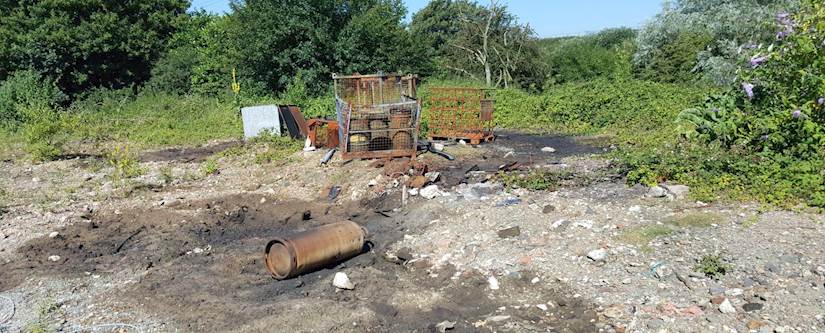
What actually is Unacceptable Risk for brownfield sites
One of the focus areas of our feasibility support work is the likelihood of a site requiring remediation and what that actually means in terms of costs, liability, planning and program risk. We run a CPD session covering this topic using case studies to illustrate (so let us know if you’re interested in that), but here’s a brief info piece on the concept of Unacceptable Risk and what the phrase “remediation” actually constitutes.
So, in a brownfield land world we evaluate risks associated with having contaminated ground and someone or something that could be harmed by it, and importantly a plausible means by which that harm could actually happen. You’ve probably seen this referred to as the Source – Pathway – Receptor approach or Contaminant Linkages and it works similarly to the classic fire triangle where if you remove one of fuel, oxygen or ignition then you can’t have a fire. But actually that’s not quite the case; in reality it’s whether you have enough oxygen, or enough spark for the fire to happen, and the same goes for Contaminant Linkages – there has to be enough interaction between the three elements for the potential level of harm to represent an unacceptable level of risk.
It could be argued that remediation is simply the process of turning the level of risk from ‘unacceptable’ to ’acceptable’. There are many ways that this can be done and you might have seen the approach of dealing with one aspect, often the pathway, as ‘breaking the linkage’. However, in reality it doesn’t necessarily need to be about complete removal, you might reduce or control one or more aspects to a point where the overall risk is no longer ‘unacceptable’.
Sometimes it really is as straight forward as constructing the car park over that grim bit of ground so that the people who are going to live there can’t touch / interact with it, other times it’s a whole lot more complicated. One thing for sure is that remediation is not one-size-fits-all and the most effective solution in terms of delivery, cost, time, programme risk etc. requires sites to be treated individually – but the objective of reducing risks to ‘not unacceptable’ generally remains the same.
But who and what determines this level of acceptability? Well, here’s another moving goal post for you, as that is extremely dependent on context. At one end of the spectrum you have Significant Possibility of Significant Harm (SPOSH) which is the Environmental Protection Act 1990 (Part 2A) definition of when a site should be determined by a local authority as ‘Contaminated Land’. At the other end you have As Low As Reasonably Practical (ALARP), which we’ve seen used when trying to surrender an Environmental Permit. But the driver for most remediation is the planning system, and that is looking for aspirational betterment, not minimum standard. So here the framework is for Minimum / Low Risk.
The answer doesn’t end up being solely based in science, it has to factor in socio-political reasoning – what level of risk does society consider to be acceptable. To give you some idea, for contaminants that can give you cancer it’s all about Excess Lifetime Cancer Risk – if you smoke your chance of getting lung cancer is somewhere around 1 in 8. Current reasoning for brownfield sites is that anything less than a 1 in 100,000 chance of getting a cancer just from living there is ‘acceptable’. Sometimes though ‘Risk’ just doesn’t come into it – such as tenants handing land back at the end of a lease or the contract wording of a land deal. Unlike Local Authorities and the Environment Agency, landlords and lawyers may not be obliged to take Sustainable Remediation principles such as environmental cost benefit into account! They just want their land back clean... but the question of what ‘clean’ actually means is a whole other can of worms!
Thank you for the various suggestions for future blog topics by the way and we look forward bringing you future content on ‘What Sustainable Remediation Means’, ‘Who Regulates What’ and ‘The Actual Drive Behind Remedial Requirements’ (sadly no, the above doesn’t answer that one!). Alternatively you can contact us about the CPD sessions where we cover all this with case studies. And as always, if you’d like to talk about any of the points raised or need advice on a project, just call us on 01954 710 666 and ask to speak to either Will Evans or Elina Banks or drop an email to info@epstrategies.co.uk.